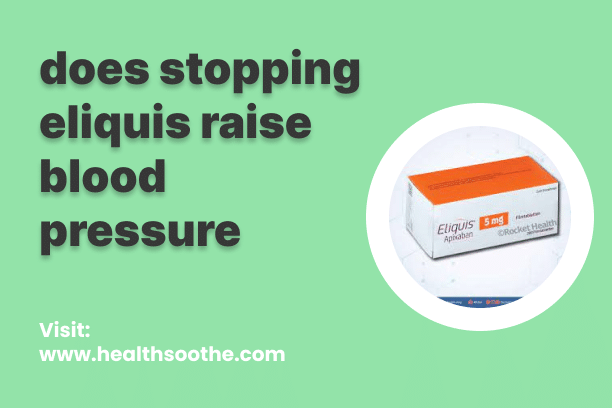Eliquis, the trade name for apixaban, is a prescribed anticoagulant used as a blood thinner. Its mechanism of action involves inhibiting the Xa enzyme complex, which plays a role in the formation of blood clots.
Preventing blood clots is crucial as they have the potential to migrate to vital organs such as the brain or heart, causing blockages in blood flow and leading to conditions like stroke or heart attack.
Initially sanctioned by the Food and Drug Administration (FDA) in 2012, Eliquis was approved to mitigate the risk of stroke and blood clots in individuals with nonvalvular atrial fibrillation—an irregular heart rhythm unrelated to abnormal heart valves. Subsequently, in March 2014, the FDA granted approval for Eliquis to reduce blood clots following hip and knee replacement surgeries. Additionally, in September 2014, the FDA endorsed its usage in treating deep vein thrombosis (DVT) and pulmonary embolism (PE), both stemming from blood clots lodged in the veins of the leg or lungs.
Eliquis is available in tablet form, with options of 2.5 milligrams and 5 milligrams. It can be taken with or without food, and the recommended dosage is twice daily. The typical maximum daily amount of Eliquis is 10 milligrams, administered twice daily.
Why are blood thinners prescribed to seniors?
Older individuals with atrial fibrillation (Afib) face a higher susceptibility to strokes compared to their younger counterparts (1). The increased prevalence of atrial fibrillation in the elderly is primarily attributed to the aging process affecting the heart muscles (2).
For individuals aged 75 and above diagnosed with atrial fibrillation, it is advisable to incorporate a blood thinner into their treatment regimen (3).
Beyond atrial fibrillation, seniors, even in the absence of this condition, are at an elevated risk of developing blood clots (4). Considering that blood thinners amplify the potential for bleeding, their prescription should be approached cautiously, with careful consideration of whether the anticipated benefits outweigh the associated risks.
What are the side effects of Eliquis in the elderly?
Eliquis carries potential side effects and warnings that are applicable irrespective of age. Common side effects in the elderly may include:
- Prolonged bleeding from cuts
- Bleeding from the nose or gums
- Dizziness
- Easy bruising
- Minor bleeding
- Nausea
Most instances of bleeding associated with Eliquis are typically categorized as minor; however, in rare cases, it can be severe and even lead to fatal outcomes due to excessive blood loss.
The risk of bleeding is heightened when Eliquis is taken concurrently with other anticoagulant medications such as warfarin, heparin, aspirin, and non-steroidal anti-inflammatories (NSAIDs) like naproxen (Aleve) and ibuprofen (Advil). Selective serotonin reuptake inhibitors (SSRIs), commonly used in treating depression, may also elevate the risk of bleeding when taken in conjunction with Eliquis.
It is essential to avoid Eliquis if you have an artificial heart valve, specific clotting disorders, abnormal bleeding tendencies, or if you are allergic to its active ingredients. Additionally, Eliquis is not recommended for individuals with antiphospholipid syndrome, a condition characterized by the body mistakenly attacking its own tissues, potentially leading to blood clots.
Should you experience adverse effects or have specific health conditions preventing Eliquis use, consult with your healthcare provider to explore alternative medications as potential substitutes for Eliquis.
Pros of Eliquis
- Effectiveness in Stroke Prevention
- Predictable Dosing
- Fewer Dietary Restrictions
- Limited Drug Interactions
Cons of Eliquis
- Risk of Bleeding
- Cost
- Not Suitable for Everyone
- Lack of Antidote
Differences Between eliquis and tramadol
Eliquis
It is an anticoagulant, specifically an oral Factor Xa inhibitor. It is prescribed to reduce the risk of stroke and systemic embolism in patients with nonvalvular atrial fibrillation, to treat and prevent deep vein thrombosis (DVT) and pulmonary embolism (PE), and to reduce the risk of recurrent DVT and PE.
Tramadol
It is an opioid analgesic used to manage moderate to moderately severe pain. Tramadol works by altering the way the body perceives and responds to pain.
Alternative to eliquis
Warfarin (Coumadin)
Warfarin is a traditional anticoagulant that has been used for many years. It requires regular monitoring of the International Normalized Ratio (INR) and may have more dietary restrictions compared to newer anticoagulants.
Are the side effects of Eliquis different in the elderly compared to younger patients?
The side effects of Eliquis remain consistent across both elderly and younger patients. However, elderly individuals, especially if they inadvertently misuse their medications by either taking too much or too little, are at a heightened risk of encountering severe side effects such as increased bleeding or the development of new blood clots.
Furthermore, older individuals may be more susceptible to certain side effects, such as nausea, particularly if they have a diminished appetite, a common occurrence among seniors. This reduced appetite can contribute to a greater likelihood of experiencing side effects like nausea in the elderly population.
How to reduce side effects
If you experience gastrointestinal symptoms like nausea when taking Eliquis, it can be beneficial to take the medication with food or milk to alleviate these side effects.
To effectively mitigate side effects, particularly excessive bleeding, it is crucial to adhere to the prescribed dosage of Eliquis. Taking either too much or too little of the medication can lead to abnormal bleeding or the formation of blood clots, posing serious and potentially fatal consequences.
For individuals who struggle with regular medication intake, using a pill organizer can be advantageous. Opting for an organizer with designated compartments for morning (AM) and evening (PM) doses can help prevent inadvertent double doses and ensure consistent adherence to the prescribed regimen.
If you have upcoming surgery, it is advisable to consult with your healthcare provider on adjusting Eliquis before and after the procedure to minimize complications such as excessive bleeding. Since the risk of clot formation is heightened post-surgery, strict adherence to Eliquis instructions is crucial during this period.
What to avoid while taking Eliquis
To optimize the effectiveness of Eliquis, it's important to consider both the foods to include and those to avoid during its intake. Key factors to steer clear of while taking Eliquis include:
Alcohol Consumption
Drinking alcohol is discouraged while on Eliquis, as it acts as a blood thinner, elevating the risk of bleeding. To minimize this risk, it's advisable to avoid consuming large amounts of alcohol, as severe bleeding can lead to conditions such as anemia and, in certain cases, prove fatal.
Combining with Other Blood Thinners
Concurrent use of Eliquis with other blood thinners, such as Coumadin (warfarin), Lovenox, Pradaxa, and Xarelto, should be avoided. This combination increases the likelihood of severe bleeding. If a transition to a different blood thinner is necessary, your healthcare provider may recommend tapering off Eliquis gradually while incrementally adjusting the new blood thinner's dosage.
Use of Sharp Objects
Due to Eliquis slowing down blood clotting, there is an increased tendency to bleed for a more extended period. Hence, exercising caution when using sharp objects is crucial. Activities like chopping food in the kitchen or cutting wood outside may pose a higher risk of serious injury while on Eliquis. Whenever possible, consider delegating such tasks to others or use protective coverings to minimize the risk of deep cuts.
By being mindful of these considerations, you can help ensure the safe and effective use of Eliquis in your healthcare regimen.
Is Eliquis a high-risk medication?
Eliquis is categorized as a "high alert" medication, indicating that while it can be both safe and effective, it also poses risks, including the potential for severe bleeding or stroke.
The likelihood of experiencing severe bleeding or a stroke is increased when Eliquis is not taken as prescribed, whether that involves taking too much of it or skipping doses.
In older individuals, especially those who may suffer from memory loss or occasional confusion, the risk of complications related to Eliquis is heightened. To mitigate this risk, it is advisable to have assistance in adhering to the prescribed dosing schedule. This assistance can be provided by a home health aide, a family member, or a staff member at an assisted living facility, ensuring that the medication is taken correctly and minimizing the chances of adverse events.
What is the safest blood thinner for the elderly?
In comparison to other blood thinners like Coumadin (warfarin), Eliquis stands out as a safer option for certain patients due to its fewer interactions. Coumadin interacts with vitamin K, which is abundant in various foods, particularly dark green vegetables.
Patients taking warfarin are typically advised to maintain a consistent intake of vitamin K, as significant fluctuations in its consumption can impact blood thickness and elevate the risk of bleeding and blood clots.
Eliquis offers an additional advantage in that it eliminates the need for routine blood tests to measure clotting time and blood thickness, a requirement associated with Coumadin.
Moreover, newer anticoagulant drugs, including Eliquis, are deemed equally effective and safer for use, especially among elderly patients. This underscores Eliquis as a favorable option in terms of both efficacy and safety within the realm of anticoagulant medications.
Read Also: The Ultimate Guide To Overcoming Drug Addiction
What happens when you stop taking Eliquis?
Eliquis carries a black box warning, the most severe caution level issued by the FDA. This warning highlights an increased risk of blood clots if Eliquis is abruptly discontinued, constituting the most serious potential side effect of stopping the medication.
Ceasing Eliquis should be approached with careful consideration and should be done under the guidance of a qualified healthcare professional. During the discontinuation process, it's crucial to be vigilant for symptoms indicating a potential blood clot. These symptoms may include:
- Throbbing or cramping pain, swelling, redness, and warmth in your arm or leg.
- Sudden difficulty breathing.
- Sharp chest pain, particularly worsened during inhalation.
- Cough or coughing up blood.
Additionally, because stopping Eliquis may elevate the risk of heart attack and stroke, it's advisable to be aware of the respective symptoms:
Heart attack symptoms:
- Chest pain or discomfort, resembling pressure, squeezing, fullness, or pain.
- Weakness, light-headedness, fainting, or breaking into a cold sweat.
- Pain or discomfort in the jaw, neck, back, or one or both arms/shoulders.
- Shortness of breath, typically accompanying other symptoms.
Stroke symptoms:
- Sudden numbness or weakness in the face, arm, or leg, particularly on one side of the body.
- Sudden confusion, difficulty speaking, or trouble understanding speech.
- Sudden vision problems in one or both eyes.
- Sudden difficulty walking, dizziness, loss of balance, or lack of coordination.
- Sudden severe headache without a known cause.
Being aware of these symptoms and seeking immediate medical attention if they occur is crucial when discontinuing Eliquis to mitigate potential risks.
Conclusion
Blood thinners are frequently prescribed for elderly patients with atrial fibrillation to mitigate the risk of stroke and heart attack. Eliquis, the brand name for apixaban, is one such prescription anticoagulant designed to prevent blood clot formation.
Eliquis is considered a safer option for elderly patients due to its lack of nutrient interactions and the absence of a requirement for routine lab monitoring.
While Eliquis is generally well-tolerated, its most common side effects include heightened bleeding, dizziness, and nausea. It is crucial to adhere to the prescribed dosage of Eliquis, as deviations such as taking too much or too little can lead to serious consequences, including severe bleeding or the formation of blood clots. Regular communication with healthcare providers is essential to monitor and manage potential side effects effectively.


